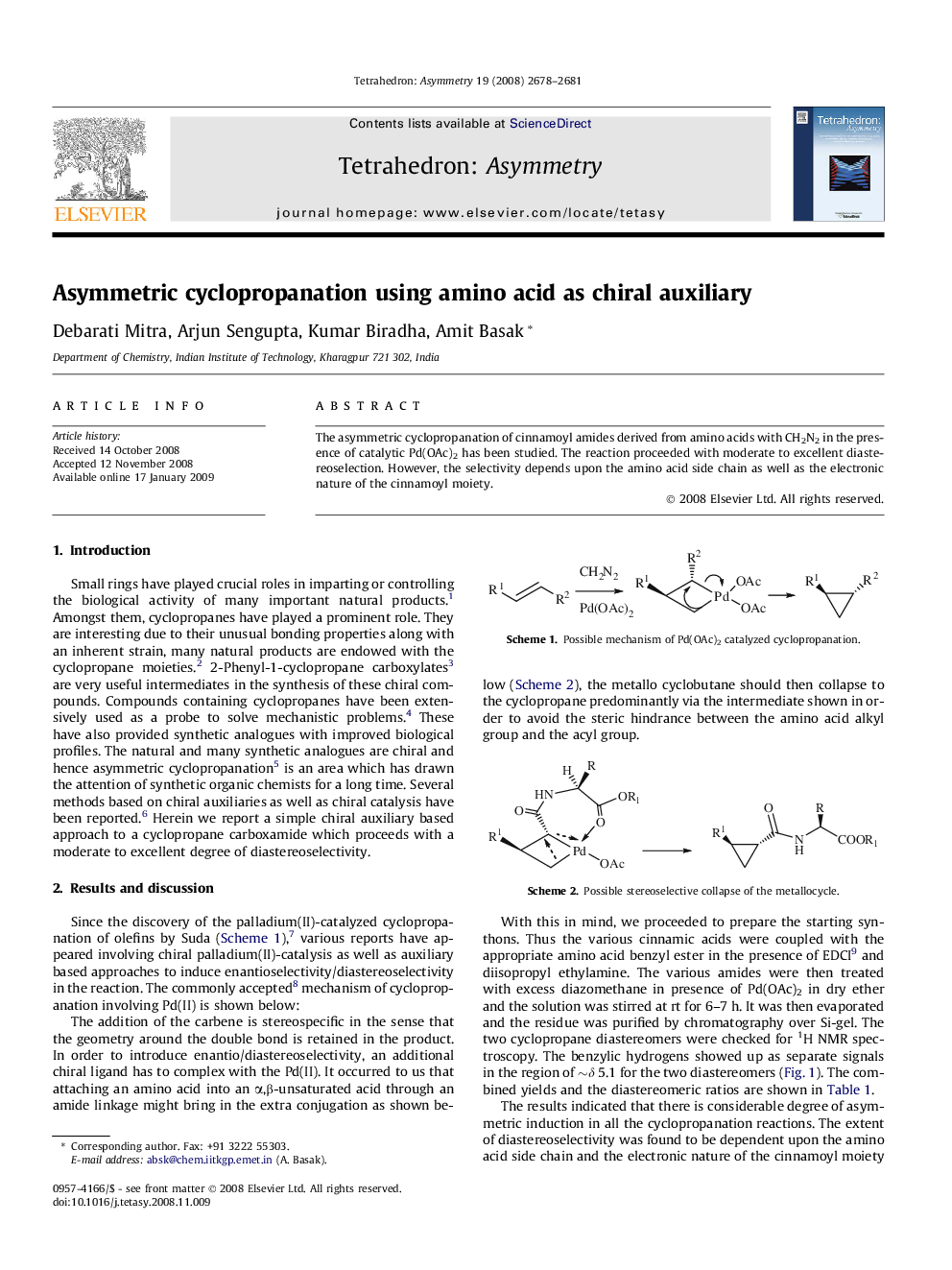| Article ID | Journal | Published Year | Pages | File Type |
|---|---|---|---|---|
| 1347541 | Tetrahedron: Asymmetry | 2008 | 4 Pages |
The asymmetric cyclopropanation of cinnamoyl amides derived from amino acids with CH2N2 in the presence of catalytic Pd(OAc)2 has been studied. The reaction proceeded with moderate to excellent diastereoselection. However, the selectivity depends upon the amino acid side chain as well as the electronic nature of the cinnamoyl moiety.
Graphical abstractFigure optionsDownload full-size imageDownload as PowerPoint slide
3-Methyl-2-[(2-phenyl-cyclopropanecarbonyl)-amino]-butyric acid benzyl esterDe = 60%[α]D28=-76 (c 0.34, CHCl3)Source of chirality: asymmetric inductionAbsolute configuration: (R,R,S)
4-Methyl-2-[(2-phenyl-cyclopropanecarbonyl)-amino]-pentanoic acid benzyl esterDe = 60%[α]D28=-27 (c 0.34, CHCl3)Source of chirality: asymmetric inductionAbsolute configuration: (R,R,S)
3-Hydroxy-2-[(2-phenyl-cyclopropanecarbonyl)-amino]-propionic acid benzyl esterDe >90%[α]D28=-85 (c 0.34, CHCl3)Source of chirality: asymmetric inductionAbsolute configuration: (R,R,S)
2-[(2-Phenyl-cyclopropanecarbonyl)-amino]-propionic acid benzyl esterDe = 60%[α]D28=-38 (c 0.34, CHCl3)Source of chirality: asymmetric inductionAbsolute configuration: (R,R,S)
